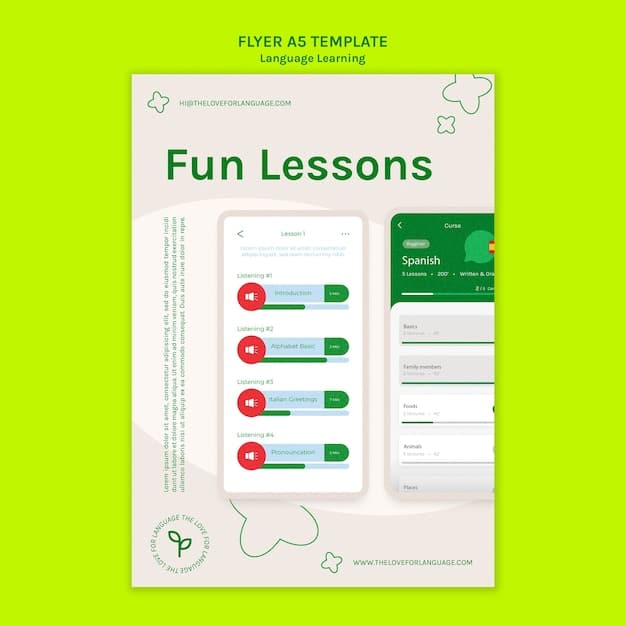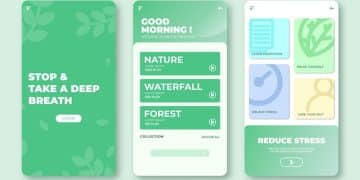Duolingo: Your Fast Track to Language Fluency in 6 Months

Duolingo offers a gamified and effective approach to language learning, potentially enabling users to achieve conversational fluency in as little as six months with consistent dedication and strategic use of its features.
Ready to finally conquer that language you’ve always dreamed of speaking? The Duolingo app might just be your secret weapon. Let’s explore a strategy to learn a new language in 6 months.
Is Duolingo the Right Choice for You?
Choosing the right language learning tool is crucial, and Duolingo stands out for its accessibility and engaging interface. But is it the best fit for everyone? Ultimately, it’s a mix of personal preferences and the level of dedication you’re willing to commit.
For those seeking a structured, gamified approach to learning, Duolingo offers a user-friendly platform with bite-sized lessons and progress tracking. This makes it particularly appealing to beginners and those who thrive on visual feedback.
Pros and Cons of Using Duolingo
Let’s take a closer look at the key advantages and disadvantages of using Duolingo for language acquisition:
- Pros: Free access to a wide range of languages, gamified learning experience, convenient mobile app, and a strong focus on vocabulary and basic grammar.
- Cons: Can be repetitive, limited opportunities for real-life conversation practice, and the accuracy of translations may vary.
- Personal Preference: Do you enjoy gamified learning? Are you looking for a free resource?
- Dedication level: Are you prepared to practice daily, even for just 15-20 minutes?
Duolingo serves as an excellent entry point, particularly for building a foundation in vocabulary and basic grammar. However, to achieve true fluency, supplementing it with other resources like language exchange partners, immersion activities, and formal courses is essential.
Setting Achievable Goals
Embarking on a language learning journey can feel overwhelming, but setting realistic goals is crucial for staying motivated and on track. Instead of aiming for perfect fluency immediately, break down your language learning goals into smaller, manageable steps.
Begin by defining what you want to achieve within the first few months. Do you want to be able to order food in a restaurant, understand basic conversations, or write simple emails? Having specific, measurable goals will help you stay focused and motivated.
How to Set SMART Goals
Follow the SMART framework to ensure your language learning goals are attainable and effective:
- Specific: Define exactly what you want to achieve.
- Measurable: How will you track your progress?
- Achievable: Are the goals realistic for your current level and time commitment?
- Relevant: Do the goals align with your overall language learning objectives?
- Time-bound: Set a specific timeframe for achieving each goal.
For example, instead of saying “I want to learn Spanish,” set a goal like “I want to be able to hold a basic conversation in Spanish within three months.” This provides a clear target and a way to measure your progress over time.

Creating a timeline and tracking your progress can provide a sense of accomplishment as you reach each milestone. Celebrate your successes along the way, and don’t be discouraged by setbacks. Language learning is a journey of continuous improvement, and every step forward is a step closer to fluency.
Crafting Your Duolingo Study Plan
Consistency is paramount in language learning, and crafting a structured study plan is key to maximizing your time with Duolingo. Without a clear plan, it’s easy to get distracted or lose momentum.
Aim to dedicate at least 15-30 minutes each day to Duolingo. Shorter, more frequent sessions are often more effective than longer, infrequent ones. Find a time that works best for you and make it a non-negotiable part of your daily routine.
Elements of an Effective Study Plan
Here are some essential components to include in your Duolingo study plan:
- Daily Lessons: Complete a set number of lessons each day, focusing on new content and reviewing previous material.
- Vocabulary Practice: Dedicate time to reviewing and memorizing new vocabulary, using flashcards or other techniques.
- Grammar Exercises: Reinforce grammar rules through targeted exercises and practice questions.
- Skill Reinforcement: Revise previously learned skills to solidify your knowledge and prevent forgetting.
Incorporate a variety of activities into your study plan to keep things engaging and prevent boredom. Mix up your lessons with vocabulary drills, grammar exercises, and conversational practice to create a well-rounded learning experience.
Remember to adapt your study plan as you progress. As you become more proficient, you may need to adjust the amount of time you spend on each activity or incorporate more advanced topics.
Maximizing Duolingo’s Features
Duolingo offers a plethora of features designed to enhance your learning experience. Understanding and utilizing these features can significantly accelerate your progress.
From personalized lessons to community forums, Duolingo provides a range of tools to cater to different learning styles and preferences. Don’t be afraid to explore and experiment to find what works best for you.
Leveraging Key Duolingo Features:
- Personalized Learning: Adapt lessons to your skill level for targeted learning.
- Progress Tracking: Monitor daily streaks and milestone achievements for motivation.
- Duolingo Stories: Improve reading and listening skills with immersive interactive stories.
- Podcasts: Enhance listening comprehension with dialogues, quizzes, and cultural insights.

Take advantage of Duolingo’s spaced repetition system, which reinforces previously learned material at optimal intervals. This helps to move vocabulary and grammar rules from short-term to long-term memory.
Beyond the App: Immersion and Practice
While Duolingo serves as an excellent foundation, true language fluency requires immersion and real-world practice. Consider supplementing your Duolingo lessons with activities that expose you to the language in authentic contexts.
Immerse yourself in the language by watching foreign films, listening to music, reading books, and engaging with native speakers. The more you surround yourself with the language, the faster you’ll progress.
Opportunities for Immersion and Practice:
Here are some practical ways to incorporate immersion and practice into your language learning routine:
- Language Exchange Partners: Connect with native speakers for reciprocal practice.
- Language Meetups: Find local groups to converse with fellow learners.
- Travel: A chance for total emersion into the culture and daily language use.
- Shadowing: Practice pronunciation by mimicking native speech.
Don’t be afraid to make mistakes. Embrace them as learning opportunities. The more you practice speaking, the more confident and fluent you’ll become.
Even if you can’t travel abroad, there are plenty of ways to create an immersive environment at home. Change the language settings on your devices, label household items in the target language, and cook recipes from the country where the language is spoken.
Maintaining Motivation and Consistency
Language learning is a marathon, not a sprint. Maintaining motivation and consistency over the long term is essential for success. Setbacks are inevitable, but the key is to stay committed to your goals and celebrate your achievements along the way.
Find ways to make language learning fun and engaging. Explore different learning resources, join online communities, and reward yourself for reaching milestones. Remember why you started learning the language in the first place, and let that passion fuel your progress.
Keeping Momentum:
- Reward Yourself: Small milestones deserve celebration to stay motivated.
- Keep a Journal: Tracking your progress can be encouraging.
- Change it up: If the routine gets boring change the way you learn, watch a movie!
- Find a Community: Connect with fellow language learners for support.
Don’t be afraid to seek guidance from teachers, mentors, or experienced language learners. They can provide valuable insights, encouragement, and personalized feedback to help you overcome challenges and stay on track.
Remember, perseverance is key. Even if you only dedicate a few minutes each day to language learning, those small efforts add up over time create real, visible change over 6 months.
| Key Point | Brief Description |
|---|---|
| 🎯 Achievable Goals | Set SMART goals for language learning success. |
| 📅 Study Plan | Consistency is key, dedicate time daily. |
| 📱 Maximize Apps | Personalize lessons and monitor progress. |
| 🗣️Real Practice | Connect with native speakers and local communities |
Frequently Asked Questions About Duolingo
▼
Yes, Duolingo offers a free version with access to all languages and lessons. There’s also a premium subscription, Duolingo Plus, which removes ads and offers offline access and other perks.
▼
Fluency varies from person to person, but with consistent use and supplementary resources, achieving conversational fluency within six months is possible. Dedication is key.
▼
Duolingo is great as a supplementary, not a replacement for traditional language courses. The App will help with vocabulary, grammar but won’t help with pronunciation.
▼
Duolingo is known for its gamified approach, free access, and structured lessons. However, weaknesses of the platform are the lack of real-life conversation practice opportunities.
▼
Set achievable goals, track your progress, join language learning communities, celebrate milestones, and remember why you started. That’s a way to stay motivated learning with Duolingo.
Conclusion
With dedication, consistency, and a well-crafted study plan, Duolingo can be a powerful tool in your language learning arsenal. Remember to supplement your lessons with immersion activities and real-world practice to achieve true fluency in as little as six months.





